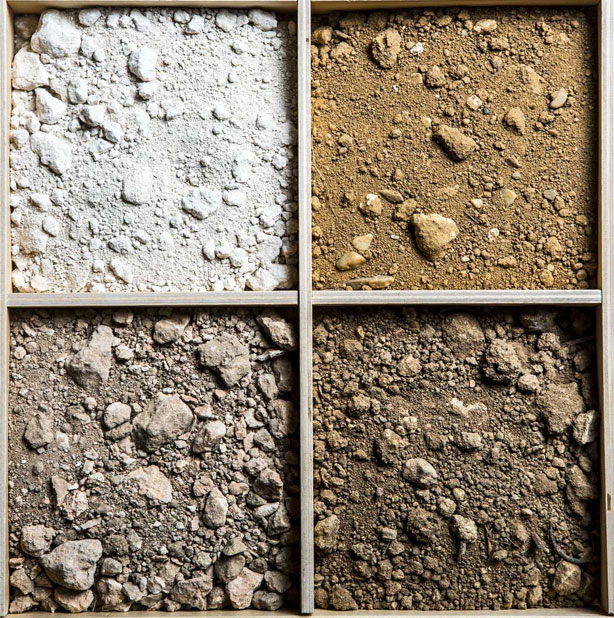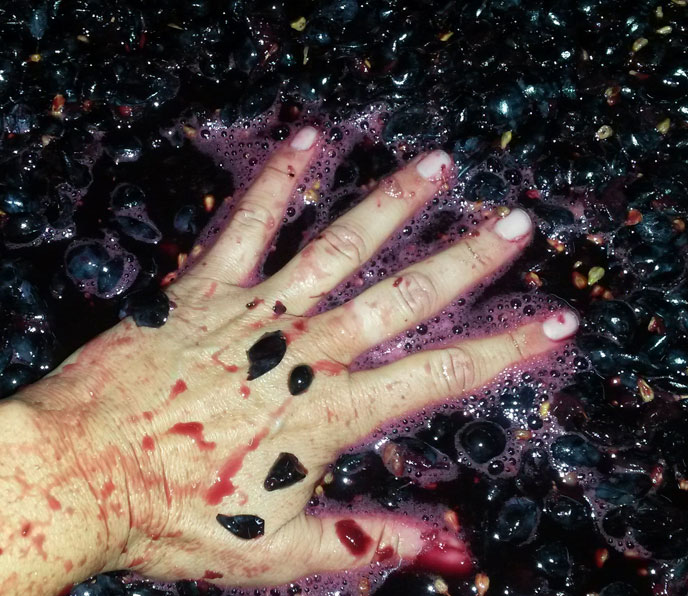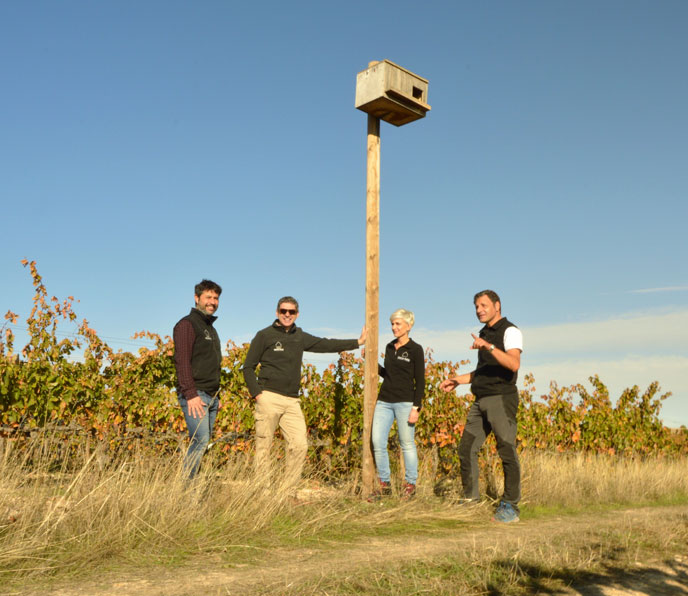
Our vineyards
This is how we create our unique wines
from an unexplored land

Our own vineyard in Gumiel de Mercado consists of around 25 hectares at an altitude of 910 metres and is situated in the north east area of the Ribera del Duero. Here we aim to produce grapes of the highest quality to produce wines of the highest quality.
Our philosophy is to grow grapes which reflect the full character of the Terroir and which are unique and unaffected by artificial additives. We are constantly striving for improvements in cultivation and learning from the natural environment.
The vineyard rests on very complex and varied land where, following a comprehensive survey of the soil we identified up to 16 different soil types. We find sand and calcareous limestone together with clay and it is the levels of clay which give us the promise of large grapes and strong vines.
Our vines are of the Tinto Fino varietal (the Tempranillo of the Ribera del Duero) with different clones from the Ribera del Duero recognised by the ITACyL , like our own selection. This is all done with the objective of improving the diversity within the vineyard, with a density of 3600 plants to produce grapes limited to 3500 kg/ha.
Our cultivation is ecological and based on simplicity and rationality- maintaining balanced pruning, using a inter-vine hoe, using natural organic mulch and fertilising with manure from the sheep which graze around the vines. We use horse drawn implements and limit the use of machinery to avoid compacting the soil. Our aim is to improve the biology of the soil for the greater well- being of the vines and, consequently, for the greater character of the grapes.
The ultimate goal is to obtain grapes and wines which have all the identity, character, soul and depth of the great Ribera del Duero – plus, something more.
Innovation in the vineyard
For this reason, we have a multitude of tools and types of innovation:
•We use a lot of maps and precision instruments for the plot of land, to determine the soils, the variable strengths of the stem and the distribution of the Tinto Fino plants on the land, the topography etc..
• Thanks to our weather station, we can get instant information about our estate, make comparisons in weather conditions, improve our knowledge of the vineyard and collect data throughout the whole year.
• We have a multidisciplinary project team of experts in different areas who help us and improve our knowledge of the vineyard and our vision.
La Perdida
In 2013, we obtained a plot of virgin land which had never been cultivated (known, in this area, as “perdida” meaning “lost” or “waste” land). Our idea was that vines grown on this land which had been previously wooded, with plants and animals and that had never been in contact with modern agricultural methods, would produce grapes and wine that was radically different and unique.
Owing to the lie of the land, it is impossible to use machinery, meaning that all work is done by hand or with horse power.


The Biodynamic Project
Since 2012, we have been collaborating with the University of Bordeaux Segalen, the Institute of the Science of Vines and Wine in Bordeaux Aquitaine and the Faculty of Oenology, together with the biologist and oenologist, Eric Narro Benot. We started the planting and the study of biodynamic viticulture, comparing it with the ecology to give a scientific viewpoint.
The basic principles of the study are:
∙ To work , treating the vine as the greatest “tool” at our disposal.
∙ To plan farming methods which suit are own needs.
∙ To study our vineyard in great detail in order to respond effectively and as rapidly as possible.
∙ To understand other ways of working which we know that modern viticultural practices have forgotten.
The objective is to know which is the vine best suited to our soils and, then, to be able to improve it, maintaining a balance with the micro-organisms, fungi, bacteria, viruses and living organisms.
Native Plants and Microscopic animals
Desde el año 2011, estamos trabajando en la identificación y evolución de las hierbas adventicias y microfauna dentro y fuera de nuestro viñedo, para de esta manera, conocer la evolución de nuestros suelos.
La filosofía de este trabajo, es conocer cómo se encuentra nuestro suelo a nivel de compactación, sanidad, estructura y composición e identificar las plantas y animales que nos indican cuál es el estado real del suelo.
